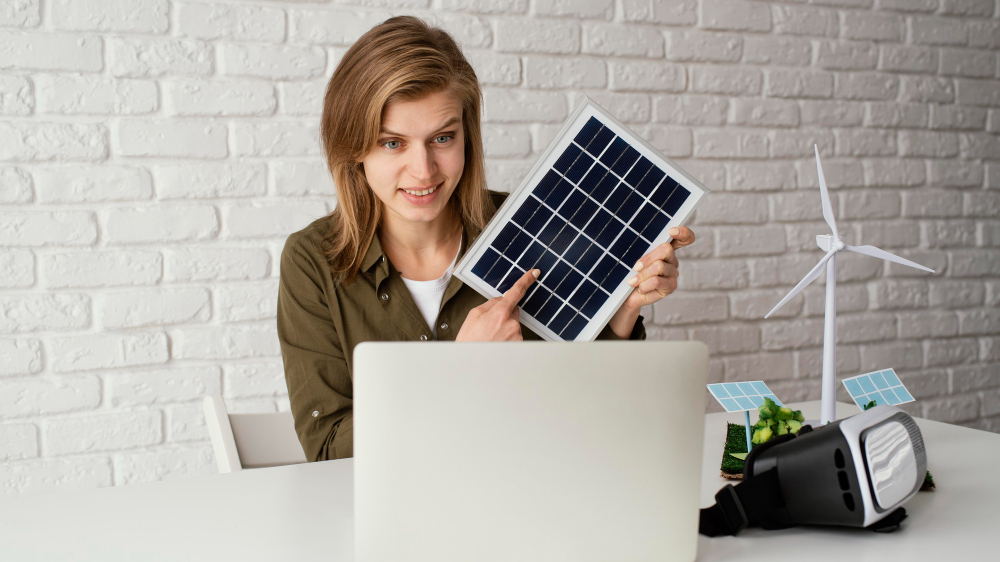
Introduction: Why Solar PV Panels Are a Smart Investment
As more households and industries across India switch to clean energy, solar PV panels are leading the charge toward sustainability and savings. Whether you’re a homeowner curious about lowering your electricity bill or a business planning a large-scale setup, understanding the solar PV panel cost is your first smart move.
In this blog, we’ll break down everything you need to know—from the price per watt to installation charges, government subsidies, and total system cost. Let’s make it easy and wallet-friendly to go solar in 2025.
What Are Solar PV Panels?
Solar PV (photovoltaic) panels are devices that convert sunlight into electricity using the photovoltaic effect. These panels generate DC electricity, which is then converted to usable AC power via a solar inverter. When mounted on rooftops or open land, these panels can power homes, offices, factories, and even off-grid villages.
Factors That Affect Solar PV Panels Cost
The cost of solar PV panels in India can vary based on several technical and economic factors:
1. Type of Solar Panel
Monocrystalline: High efficiency (up to 22%), sleek appearance, premium pricing.
Polycrystalline: Budget-friendly, slightly less efficient.
Bifacial: Generates power from both sides, suitable for high-output industrial use.
Thin-film: Lightweight, but generally lower in efficiency.
2. System Size
Your energy needs dictate how many panels you need. A typical 3kW home system can cost less than a 10kW commercial system.
3. Panel Efficiency
Panels with better efficiency cost more but offer higher energy output, meaning fewer panels to install.
4. Rooftop Type
Flat concrete roofs usually require mounting structures, which add to the cost. Tiled or metal roofs can reduce hardware requirements.
5. Installation Location
Solar panel prices differ by region. For example, installations in Chandigarh may cost more due to demand and labor rates.
Average Solar PV Panels Cost in India (2025)
Here’s a quick estimate of solar panel prices per kW (including basic installation):
| System Size | Estimated Price (INR) | Notes |
|---|---|---|
| 1 kW | ₹60,000–₹80,000 | Suitable for small homes |
| 3 kW | ₹1.5–₹2.1 lakhs | Can run AC and appliances |
| 5 kW | ₹2.4–₹3.5 lakhs | Mid-sized homes and offices |
| 10 kW | ₹5.0–₹6.5 lakhs | Ideal for small factories or villas |
These prices vary depending on panel type, inverter quality, and subsidies.
Cost Breakdown of a Solar PV System
🔧 1. Solar Panels
Make up 50–60% of the total cost.
Mono: ₹40–₹50 per watt
Poly: ₹30–₹38 per watt
⚡ 2. Inverter
Costs ₹15,000 to ₹60,000 depending on system size and whether it’s string or micro-inverter.
🔩 3. Mounting Structure & Wiring
Adds ₹8,000 to ₹30,000 depending on roof type and layout.
🔋 4. Battery (Optional)
For off-grid setups, add ₹20,000 to ₹80,000 for lithium or lead-acid batteries.
Government Subsidies and Solar Panel Cost Reduction
Under the PM Surya Ghar Yojana and MNRE schemes, Indian homeowners can avail subsidies of up to
₹30,000–₹78,000 for systems up to 3 kW
Varies by state and DISCOM
Only applies if you use ALMM-approved solar panel brands
💡 Tip: Always check if your solar contractor is empaneled to claim subsidies.
ROI and Payback Period
Most residential solar systems offer a return on investment within 4–6 years, thanks to
Net metering benefits
Reduced monthly electric bills
Low maintenance costs
Over a 25-year lifespan, a typical 5kW system can save you ₹15–20 lakhs.
Hidden Costs to Watch Out For
Be aware of these possible additional expenses:
Net metering setup fees (₹3,000–₹10,000)
Extended AMC plans
Roof repair or reinforcement
Permit and inspection charges
Should You Lease or Buy Solar PV Panels?
Buying has a higher upfront cost but greater long-term savings.
Leasing or PPA may suit those without upfront capital but yields lower savings.
Best Places to Buy Solar PV Panels in India
Local solar panel contractors for personalized quotes
Online platforms (Loom Solar, Kenbrook Solar, etc.)
Certified installers listed on the National Rooftop Portal
Final Thoughts
Switching to solar PV panels is not just an eco-friendly move—it’s a financially smart one. Whether you’re installing for your home or a commercial space, understanding solar PV panel costs gives you the upper hand. With falling prices, rising electricity rates, and available subsidies, 2025 is the perfect year to go solar in India.
📌 FAQs
Q1: How do I calculate the cost of solar panels per kWh?
A: Divide the total system cost by the total units (kWh) generated per year × lifespan (in years). This gives you an average cost per kWh.
Q2: Which is cheaper—mono or poly panels?
A: Poly panels are cheaper upfront, but mono panels are more efficient and space-saving.
Q3: Can solar panels power an air conditioner?
A: Yes, with a 3kW or larger system, you can run a 1.5-ton AC and essential appliances.
Q4: What are some ways to reduce the cost of solar panel systems?
A: Apply for government subsidies, compare vendor quotes, and choose efficient panels to reduce total cost.
Q5: Can solar panels be installed on a flat roof?
A: Absolutely. Mounting structures allow angle adjustments for maximum sun exposure.
🔗 Internal Keywords Interlinked
(*Note: All costs mentioned above are estimates and can change with time.)
